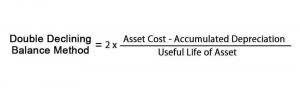
Special accounting standards also evolved for industries with a fiduciary responsibility to the public such as banks and insurance companies. To protect insurance company policyholders, state insurance regulators began to monitor insurance company solvency. As they did, a special insurance accounting standards, known as statutory accounting principles and practices, or SAP, developed. The term statutory accounting denotes the fact that SAP embodies practices prescribed or permitted by state law. As a basic example, assume a doctor is paying $500,000 per year for medical malpractice insurance, an ordinary and necessary business expense.
- Your books must show your gross income, as well as your deductions and credits.
- To protect insurance company policyholders, state insurance regulators began to monitor insurance company solvency.
- And if you find yourself in doubt, the team at FinancePal is here to help.
- When considering cash vs. accrual accounting, it can be tempting to lean toward cash-basis accounting because of its simplicity.
Prepaid insurance expense
The company can record the prepaid insurance with the journal entry of debiting the prepaid insurance account and crediting the cash account. Insurance proceeds may compensate a company for business interruption – e.g. for lost profits caused by a specific external event. The ability to claim these proceeds will depend on the specific terms of the insurance contract, actions taken by the government and interpretation of the applicable law. For example, if all restaurants are ordered to close by the government, then they may be able to claim under their insurance contracts. IFRS 17 brings greater comparability and transparency about the profitability of insurance contracts and gives users more insights into an insurer’s financial health. IFRS 17 introduces the general measurement model, which is based on a risk-adjusted present value of future cash flows that will arise as the insurance contract is fulfilled.
Subscribe to the IFRS® Perspectives Newsletter
- However, you can then reclaim a portion of that as a business expense when you calculate your deductible vehicle expenses based on the business use of your personal vehicle.
- The credit in the journal entry removes Inventory in the business accounts; it’s because Inventory has been destroyed and needs to be removed from the business books.
- When a captive insurance company is set up, a portion of the premiums paid annually into the captive entity are typically then paid into a reinsurer fund that pools resources and reinsures a multitude of captives invested in the pool of funds.
- Unearned premiums are the portion of the premium that corresponds to the unexpired part of the policy period.
- Most actuarial companies specifically break down the origin of how they compute the premium.
- It is unlikely, however, that an additional premium of $10,000 per year to a captive insurance company for keeping the butcher’s computers from being hacked would pass IRS muster.
Prepaid insurance is an asset account on the balance sheet, in which its normal balance is on the debit side. The company should not record the advance payment as the insurance expense immediately. This is due to, under the accrual basis of accounting, insurance accounting entries the expense should only be recorded when it occurs. Being able to group contracts to apply the general measurement model may require significant effort and changes in how insurance contracts are measured and how their results are reported to users.

Motor Vehicle Insurance
- Regulatory compliance and reporting are fundamental aspects of accounting in the insurance industry.
- The disclosure requirements are also key for US companies because the volume and nature of disclosures required by IFRS 17 differ greatly from US GAAP.
- The actual cost of each policy to the insurer is not known until the end of the policy period (or for some insurance products long after the end of the policy period), when the cost of claims can be calculated with finality.
- No. 7 (2017), is a clear road map of what not to do in setting up a captive insurance arrangement.
- This is accomplished with a debit of $1,000 to Insurance Expense and a credit of $1,000 to Prepaid Insurance.
So, in order to protect the financial well-being of your company and uphold your responsibility to policyholders, it is essential that you follow statutory accounting principles. The premium for each policy, or contract, is calculated based in part on historical data aggregated from many similar policies and is paid in advance of the delivery of the protection. The actual cost of each policy to the insurer is not known until the end of the policy period (or for some insurance products long after the end of the policy period), when the cost of claims can be calculated with finality. Regulatory compliance and reporting are fundamental aspects of accounting in the insurance industry. Insurance companies operate in a highly regulated environment, and adherence to these regulations is crucial for maintaining financial stability, consumer protection, and market integrity.

Personal insurance payments are not deductible business expenses so must not go on the Income Statement (Profit and Loss Report). Your individual vehicle insurance may not cover your business use of your personal vehicle. The recommendation is to group this insurance with the other motor vehicle expenses (fuel, r&m) in the bookkeeping accounting records. An insurance expense occurs after a small business signs up with an insurance provider to receive protection cover.
Prepaid Insurance vs. Insurance Expense

Claim settlement accounting is a crucial aspect of the insurance business, dealing with the recognition and handling of claims made by policyholders. It involves the process of recording and paying out claims, which are the primary liabilities for insurance companies. This section delves into the intricacies of accounting for claim settlements in the insurance industry.
- The second listed feature of abusive coverage is that which does not match a business need or risk of the insured.
- About the same time, the European Union (EU) started work on Solvency II, a framework directive aimed at streamlining and strengthening solvency requirements across the EU in an effort to create a single market for insurance.
- The discussion on Investment Accounting reveals how insurance companies balance risk and return to bolster their financial strength.
- Accountingcoach.com has a good example of accounting for payroll withholdings for health insurance.
- Premiums are the primary source of revenue for insurance companies, and how they are recognized and managed in the financial statements is unique to the industry.
- This means the company should record the insurance expense at the period end adjusting entry when a portion of prepaid insurance has expired.
